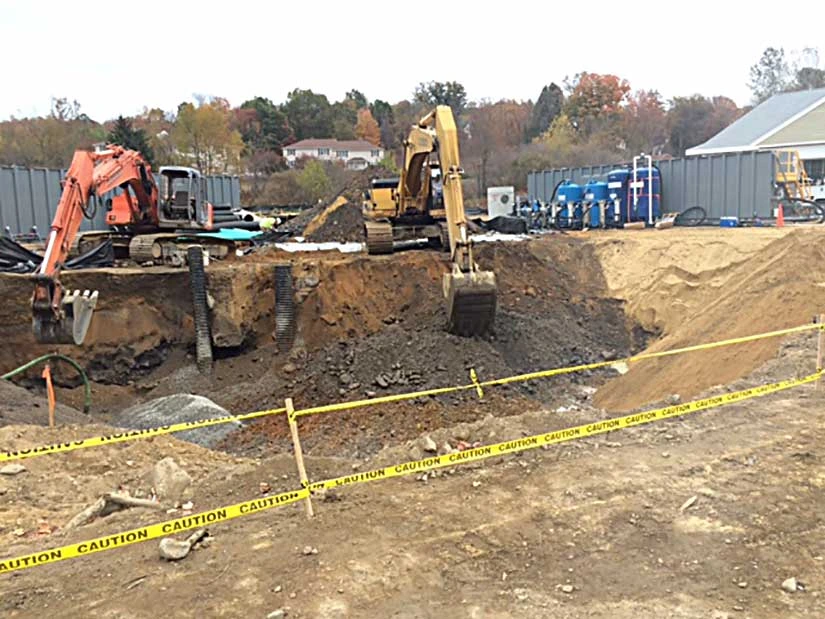Convenience Store Expansion and Modernization
Client Challenge
A regional petroleum marketer was seeking responsible growth and expansion of its retail store operation. When the opportunity arose to purchase an adjoining property, the marketer sought to expand its operations through the demolition of its outdated infrastructure and redevelopment of a larger, more modern facility.
With a presence dating back more than three decades, this busy retail site had multiple reported releases and environmental actions over time. The selected remedial technology proposed for the site included localized soil excavation in the area of a former used-oil underground storage tank (UST), station building, and beneath the gasoline dispenser islands, followed by a period of monitored natural attenuation. As part of the site’s redevelopment plans, the client pursued implementation of the release abatement measure (RAM) to address residual source-area soil impacts contributing to the groundwater impacts underlying the site and adjacent roadway, and to achieve regulatory closure under the Massachusetts Contingency Plan (MCP).
GES Solution
GES was contracted to steward the site to closure in coordination with the construction and redevelopment plan. This required completion of all demolition, construction, and cleanup activities within a four-month period. GES provided oversight of the removal of the gas station infrastructure, including USTs, abandoned hydraulic lift, and subsurface piping.
Due to a very shallow groundwater table, dewatering was required to facilitate remedial excavation activities and installation of the new UST system. Dewatering activities included 24/7 operation of a temporary groundwater treatment system designed by GES to remove petroleum and metals prior to discharge. GES secured the permit to discharge treated groundwater to the nearby catch basin.
A separate RAM was implemented to complete targeted soil excavation and disposal of lead-impacted soils that were encountered under a pre-existing remedial action.
GES responded to changes in the construction plan that altered the UST system design, by performing soil characterization and disposal management for an additional section of the property. Approximately 3,600 tons of impacted soil was excavated and properly disposed of. GES also provided oversight of excavation and trenching activities related to the station’s canopy footing, utility infrastructure, retention ponds, signage, and retaining wall.
Client Value
GES’ approach and advocacy helped the client achieve its business goals, from the initial Phase I environmental site assessment of the new property through the required post-remediation compliance monitoring and reporting. When the construction project changed direction, GES helped manage the unexpected with technical consulting, coordination, and advocacy to solve challenges before they had the ability to sidetrack the initiative. Within four months, expanded retail operations were introduced with an expanded and modernized footprint. GES has continued to provide post-remediation monitoring and regulatory reporting as the site maintains compliance and progresses to regulatory closure, anticipated within 24 months.
